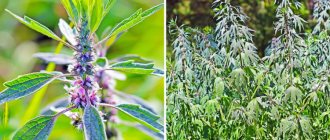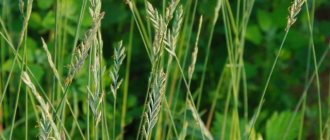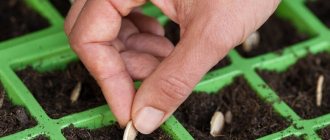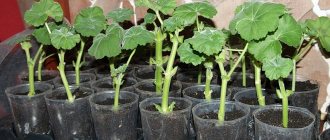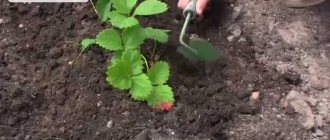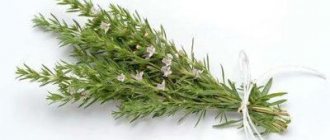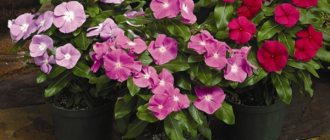After flowering
Collecting seeds
This plant can reproduce without your participation by self-sowing. In spring, you will only need to carefully thin out the seedlings. If you need seeds, they can be collected very easily. When the plants bloom, you will need to mark the most spectacular flowers. When they begin to fade, you will need to put gauze bags on them. The seeds will become mature 4 weeks after the flower withers, and the color of the box should turn brown. Trim the boxes and pour the seeds from them onto newspaper. These seeds can be sown before winter or poured into a paper bag, where they will be stored until the next spring.
Wintering
When the clarkia flowering ends, the bushes can be cut down to the ground surface if desired. And during the autumn digging of the site, it will be necessary to remove the remains of plants and burn them. It is not recommended to throw them away, as pathogenic microorganisms or fungi may appear in such plant debris.
Plant care during and after flowering
When it comes to grooming, Clarkia shows modesty and unpretentiousness. In order for the crop to delight with abundant beautiful flowering, all that is required is control of the moisture level and timely removal of buds after flowering.
Given its self-seeding ability, there is no need to collect seed material. If such a need exists, then you should choose bushes with the most beautiful large buds and collect seed from them. Since clarkia is an annual, after flowering the stems are cut to the very roots, and the remaining roots are dug up in the fall.
Planting and care of clarkia
Osteospermum, choose an annual or perennial crop
When growing for seedlings, you need to take into account that Clarkia really does not like transplants, and can withstand this procedure only at a very young age.
If you wish, you can grow a magnificent clarkia in your own garden. She will need to organize growing conditions that will be as close as possible to natural ones.
The most preferable location is in full sun, and the soil should be dry, loose, not too fertile and slightly acidic.
On wet and heavy soil, the crop will not be able to fully develop due to damage to the roots by fungal diseases, which are characteristic precisely under such conditions. A lack of bright light will lead to an increase in green mass to the detriment of the number of flowers. In accordance with this, it may be necessary to preliminarily introduce peat, humus and mineral fertilizers into the soil in the form of potassium sulfate and superphosphate (1 tablespoon per 1 square meter).
The plant belongs to the annuals that are resistant to cold. Seeds are resistant to low temperatures, so you can plant them either as seedlings in boxes or directly in frosty soil.
To speed up flowering, the plant must be grown using seedlings. But do not forget that flowers that were obtained from seeds from the garden tend to develop better, and their inflorescences are larger in size.
Growing from seeds
Clarkia seeds are very small, so they are not buried in the ground, but laid out on the surface, sprinkled with a very thin layer of substrate.
They begin to sow Clarkia in open ground from the beginning of May, in greenhouses - from mid-April. The crop germinates most effectively at a temperature of 15 degrees and with high air humidity.
Due to the very small size of the seeds (about 3,500 pieces in one gram), they should not be buried in the ground, but laid out on the surface, compacted with a wooden spatula, or sprinkled with a small amount of substrate.
It is most convenient to plant seeds in nests (4-5 pieces each), maintaining some distance between them. If you use the seedling method, flowers need to be picked, placing 3-4 seedlings in a container.
Picking is carried out as quickly as possible due to the fact that the plant safely accepts transplantation only while it is young. It is more appropriate to save seeds from the most beautiful, lush and brightly colored bushes.
If a clarkia with a different color grows near the plant whose seeds you plan to use in the future, cross-pollination is possible.
As a result, the seeds may lose the shade of the mother bush. Therefore, it is advisable to isolate seed clarkia from other representatives of its species.
https://youtube.com/watch?v=HaD28HG5dXs
Features of care:
- Flowers must be weeded periodically and the soil loosened.
- Watering should be carried out as necessary, while monitoring the condition of the soil layer to avoid stagnation of water and excessive moisture.
- For rich flowering, the use of mineral fertilizers is recommended once every 14 days, but the use of organic fertilizer is not advisable.
- For abundant tillering, young bushes need to be pinched at a height of 10-15 cm.
- It would not hurt to install a support in the center of a group of tall varieties.
- To extend the flowering period and give the garden a well-groomed appearance, you need to regularly remove wilted inflorescences. The only exceptions are those plants from which seeds will be harvested.
- For faster ripening, you can pinch the top of the flowering shoots.
Bright flowering, ease of care, and ease of propagation contribute to the popularity of the plant in ornamental gardening. Grown since the beginning of the 19th century, the clarkia flower, both then and today, looks luxurious in a flowerbed or garden. It can be grown in a special container or pot, on a balcony or terrace. In addition, the crop is excellent for cutting. Gradually opening its buds, the clarkia will remain in the water for at least ten days.
Planting and propagation
Clarkia is not demanding in terms of maintenance and care; planting and propagation does not cause any particular difficulties.
Clarkia seedlings grown from seeds are adapted to cool temperatures and are not afraid of drafts.
The clarkia flower will be bright and the flowering will be long if it is grown on loose, fertile soils. If planted in acidic soil, young plants develop poorly and in most cases die.
The plant is propagated by sowing seeds in open ground directly to a permanent place or to seedlings.
When to plant clarkia?
Grown Clarkia seedlings are planted in late April - early May, when the likelihood of night frosts returning is minimal. The decision to plant clarkia in autumn or spring depends on when you want to get a flowering plant. If the seeds are sown directly into the ground, then sowing is done in the second half of September or in the second half of April.
How to collect seeds?
During flowering, you should notice 3-4 healthy large flowers. After pollination, wilting and at the beginning of the formation of the seed capsule, an isolation procedure is carried out. To do this, tie the fruit tightly, but not tightly, to the stem with a clean gauze tape. During this time, the seed box will ripen, and the gauze will not allow the seeds to scatter, thereby eliminating the possibility of self-seeding.
The seeds ripen completely within 30 days after the flower withers. By the dark brown color of the fruit, you can determine that the seeds are fully ripe. They are cut off, the seeds are taken out, and dried on a flat surface. Matchboxes or paper envelopes work well for storage.
Preparing seeds for sowing
Before planting clarkia, the seeds are soaked for 2.5-3 hours in a weak solution of potassium permanganate. The seeds are wrapped in a napkin, gauze, bandage or cosmetic cotton pad and dipped into the solution. This way they will not float up and will be well soaked. After the soaking procedure, the seeds are laid out on a sheet of paper or on a clean, dry napkin and dried at room temperature. The seeds are ready for sowing.
Sowing seeds in open ground
In prepared soil rich in mineral fertilizers, make shallow grooves 1.5-2 cm deep, at a distance of 4-5 cm from each other. Using paper or a toothpick, the seed is placed in the recesses, sprinkled with earth, and moistened.
It is necessary to cover the crops with a greenhouse, periodically ventilate and moisten the soil as it dries. In 10-14 days the first shoots will appear. Young shoots are not replanted, but thinned out, leaving a distance of 10-15 cm between seedlings. You should not do more, otherwise it will be difficult to get lush and bright flowering from the plants. The greenhouse is removed in early May, when the likelihood of night frosts is very low. In early spring, when sowing clarkia in open ground, young seedlings are not watered, since the soil is sufficiently moistened by melt water.
Seed sowing technology
In the prepared soil, shallow grooves are made at a distance of 1-2 cm from each other. Clarkia seeds are sown in holes and lightly sprinkled with soil. Afterwards it is necessary to moisten the soil. This should be done with extreme caution and precision to avoid the seeds floating out of the ground. Use a spray bottle or a teaspoon. The container with soil is covered with a transparent material (glass, polyethylene) and placed in a well-lit place.
The cover should be removed daily to ventilate and prevent seed rotting. As soon as the first shoots appear, the transparent cover is removed.
What containers are needed for sowing?
Select shallow containers that, before loading the soil, are treated with boiling water and wiped with alcohol or hydrogen peroxide for disinfection. For Clarkia seeds, it is preferable to choose medium or large nurseries. You can use individual cups, but they are not as convenient to work with as wide containers. The seeded containers are left in well-lit places that avoid drafts.
Planting clarkia in open ground
12-14 days before planting a herbaceous plant in open ground, dig up the soil, remove old roots, and apply mineral fertilizers.
The stems of an adult plant branch strongly, as a result of which the distance between plants should be at least 15 cm. If the plants are close to each other, then they need to be thinned out, this will allow the plant to maintain a lush, elegant appearance. Clarkia is planted in the planting holes from pots by transshipment, that is, together with a lump of earth. Do not divide young bushes, otherwise the roots will be damaged and the plant will die. A peg or other support is inserted into the soil next to the bush. To stimulate lush growth and dense branching, bushes are pinched.
Clarkia seedlings
Seeds for seedlings are sown in containers with prepared soil in early March. The flower obtained in this way has better health and is protected from various weather changes. Young shoots develop and grow quite quickly. When 2-3 true leaves form, they are pinched. The seedling method is good for growing clarkia at home in pots. If seedlings are grown for open ground, then transplantation is planned in May.
Growing
The plant can delight with its elegant appearance not only in the garden, but also indoors. Growing clarkia at home will not cause any particular difficulties, although in a potted version it will be more modest in size and with less lush flowering. When growing clarkia at home, you should take care of additional lighting, especially in winter.
If in open ground the seeds germinate late and the bush has not completely flowered, in the fall it is dug up with a large lump of earth, transplanted into a container and grown at home. The bush will not grow year-round even with the best care and maintenance. After the flowers wither, the entire root system gradually dies off.
In spring, seeds are sown in early May. In this case, flowering can be expected in early - mid-July and until mid-September.
In autumn, seeds are sown in open ground in the second half of September; in this case, the seedlings will grow a little, become stronger and overwinter under cover. When planting in autumn, flowering occurs much earlier - in early June.
Clarkia in winter
The plant is quite frost-resistant and easily tolerates the cold season, but for better preservation it is recommended to cover the flower with straw, fallen leaves, and moss after pruning. This manipulation is necessary if the plant remains in the same place. But when a new place for planting clarkia is determined in the spring, the old one is dug up in the fall, all roots and parts of the plant are removed in order to prevent the development of fungal diseases.
Sources used:
- https://rastenievod.com/klarkiya.html
- https://floristics.info/ru/stati/sadovodstvo/2290-klarkiya-vyrashchivanie-iz-semyan-posadka-i-ukhod.html
- https://naogorode.net/klarkiya-izyashhnaya-vyrashhivanie-iz-semyan/
- https://maja-dacha.ru/klarkiya-iz-semyan/
- https://zelenyjmir.ru/klarkiya-izyashhnaya/
- https://teplica-exp.ru/klarkiya-izyashhnaya-vyrashhivanie-iz-semyan/
- https://sadovnikam.ru/414418a-tsvetok-klarkiya-foto-opisanie-vyiraschivanie-iz-semyan-uhod
- https://mirogorodov.ru/vyraschivanie-klarkii.html
- https://xn—-7sbbncec2cn3hzb.xn--p1ai/klarkiya-izyashhnaya-vyrashhivanie-iz-semyan/
- https://rostok.info/sad-i-ogorod/cvety-i-rasteniya/klarkiya-izyashhnaya-vyrashhivanie-iz-semyan.html
Clarkia graceful mixture of color varieties in the photo
Fatshedera home care and transplantation
Fluffy flowers, made in pink and purple tones, strewn with tall (up to 1 m) bushes, belong to Clarkia graceful - this is the most famous species of this plant in floriculture, from which more than 10 varieties have already been bred. Most of them have small flowers with a diameter of up to 3-4 cm, whose petals are painted in white, pink or purple tones. Coral and salmon shades are a little less common, and not so long ago breeders managed to develop a mixed variety in which it is difficult to guess the dominant color.
It was called Bouquetmixed and the shape of the inflorescences resembles hyacinths: the same fluffy terry hemispheres, sitting along the entire height of the stem almost opposite each other. The petals in it are painted in shades of pink and white, which allows you to create an incredibly harmonious flowerbed from a single variety of clarkia or shade other flowers with this delicate stretch of shades.
Of the more traditional varieties of graceful clarkia, the varieties that deserve attention are AppleBlossom, which, despite its name, is famous for its peach-pink petals, as well as Gloriosa, which amazes with bright scarlet flowers sitting on the stems singly, and not in inflorescences, as can be seen in most varieties of graceful clarkia . But the most famous variety of this color is Brilliant, which has a cool pink color.
Popular types
Of the variety of Clarkia species, only three of them are popular among gardeners. Their breeding and cultivation is intended for decorative design of flower beds, balconies, terraces and borders.
Clarkia graceful
This is an annual plant about 70–100 cm high. Its bush consists of thin and branched stems, which are covered with dense bark below. The leaves are oval-shaped, blue-green in color, with prominent veins and jagged edges.
The flowers have a diameter of up to 5 cm, can be double or simple, red, pink, white, blue, violet or lilac. Their petals are small and round in shape, which is why the plant is also called Clarkia marigold. Flowering is abundant and lasts from early July to September. Seeds can remain viable for up to 3–4 years. The flower is very undemanding in care, so its cultivation is widespread in the gardens of our country.
Clarkia graceful
Eschszolzia
Decorative clarkia is a bush 30-90 cm in size, crowned with double or simple inflorescences that look like roses in white, pink-red, purple, lilac, and orange. The buds are found in one color or two colors with different inclusions. Clarkia is often confused with godetia, believing that these are two names for one flower. These are various plants classified as fireweed family. Clarkia and godetia - the main difference:
- Flower size: godetia has larger and more striking corollas - 5-10 cm in diameter, clarkia flowers reach 2.5-3 cm in size.
- Godetia blooms longer than clarkia and tolerates picks better.
What other types of clarkia are cultivated by gardeners?
What a violet looks like - description of the plant
You can also see other representatives of this family in flower beds and gardens. Among them are the following types:
- Clarkia terry. The variety is distinguished by a low stem (up to 65 cm) and huge inflorescences by the standards of the species. They reach 6 cm in diameter. Flowers are collected in a spike.
- Fantasy. The bush reaches 75 cm. The plant is distinguished by lush flowering and different colors of inflorescences.
- Pretty. A very low plant, the height of which barely reaches 30 cm. The inflorescences of this clarkia are double and simple. Flowering begins at the end of May and continues until frost.
- Brevery. This is a fairly new variety. It is resistant to light frosts and reproduces without seedlings. Compact bush with pink flowers.
Planting seeds and care during the summer
The germination of Clarkia seeds under normal conditions lasts for four years.
There are several formats for sowing this flower - for seedlings, in open ground in spring planting or autumn planting “before winter”. The flower loves warmth, but the crops tolerate winter well, and therefore the sowing time is chosen depending on convenience.
- Planting before winter. Performed at the end of October in dry, windless weather. On the site, grooves are made at a distance of about twenty centimeters, where the seeds are laid out in groups of four, also at intervals of twenty centimeters, so that bushes are formed during germination. You can plant a continuous carpet, but then thinning will be required. The crops are covered with a layer of sand and additionally mulched. Watering is not performed during autumn planting.
- Spring planting. If you do not want to risk planting flowers in the fall, you need to stratify the seeds. To do this, they are immersed in damp sand and stored all winter in the main area of the refrigerator or on the balcony, where the air temperature is stable at about five degrees Celsius. Clarkia seeds are sown in open ground at the end of April, similar to autumn planting, but followed by drip watering and without covering with mulch. In general, the layer of soil covering the seeds should be small to facilitate germination.
The emergence of seedlings during spring sowing should be expected within two weeks. If continuous planting was carried out, after the formation of the first full-fledged leaves, the clarkia is thinned out, leaving small groups at a distance of up to twenty-five centimeters. In the phase of formation of five true leaves, the shoots must be pinched.
Planting by seedling method is rarely performed if, for example, you need to achieve early flowering, you plan to plant for growing on a balcony or special artistic design of the landscape. You can sow in March, but be sure to supplement the seedlings with phytolamps. This will allow you to achieve flowering at the very beginning of summer.
Sow in shallow containers in moist soil and lightly press with a plank. Next, cover with a thin layer of sand and a film with ventilation holes. The crops are opened daily and, if necessary, moistened with a spray bottle. After the emergence of shoots, the film is removed, and in the phase of a fully open pair of true leaves, they are dropped into peat cups. Transfer to a flowerbed or balcony in May.
During the period of bud formation, Clarkia is fed with potassium and phosphorus fertilizers.
Throughout the summer, faded inflorescences and seed pods are removed, and only closer to autumn you can leave a few to collect your own seeds. By the way, if you plan to prepare seeds yourself, different varieties of clarkia must be removed so that they do not accidentally cross-pollinate and retain varietal characteristics.
In addition to flower beds, Clarkia elegans preserves very well in bouquets and is used in decoration in combination with Chinese carnations.
The main pest that attacks this flower is the mealybug, which can be controlled by spraying with insecticides.
In the fall, after flowering has ended, the area can be cleared of plants, fertilized, and replanted “before winter.”
What else to grow from seeds:
In the garden:
- Decorative Coleus
- Outlandish Salpiglossis
- Perennial Carnation Shabo
- Abundantly blooming Aubrieta
- Heliotrope turning behind the sun
In room:
- Eustoma with lush flowers
- Homemade Cyclamen
- Balcony Verbena
- Universal Waller's Balsam
- Ampel Bacopa
Clarkia and other plants
From clarkia and other garden flowers you can create an amazingly beautiful flower garden.
- Next to the bush you can plant phlox, lilies, white daisies and asters.
- Clarkia looks harmonious next to low red roses.
- If you cut the clarkia and keep it in water, it will stand for two weeks, slowly opening buds.
- Clarkia is often planted in groups to decorate ridges, for the purpose of landscaping balconies, and creating Moorish lawns.
Several types of clarkia can be planted in the garden at the same time. It is only important to make small distances between each type of plant. Since during pollination, future generations may lose their original species attractiveness by mixing with another variety.
Now you know how Clarkia is grown from seeds, as well as what types of plants there are and how to properly care for them. It is important to maintain proper care and then the bushes will decorate the garden throughout the warm period of the year.
Features of care
Growing clarkia is relatively easy, and even a beginner can handle this task with ease. Watering should only be done when there is a long dry hot period. In this case, watering only needs to be done a couple of times every 7 days. At other times, rainwater will be enough for such flowers. When watering, you should take into account that the liquid should be quickly absorbed into the soil, and not stand for a long time around the bush. Fertilizing should be done only during the period of bud formation and flowering, and it is recommended to use complex mineral fertilizer for this. The frequency of fertilizing is once every half month. It is recommended to use Rainbow or Kemira as fertilizers, but organic matter cannot be added to the soil. In order for the flowering to be long and lush, fading flowers must be removed in a timely manner.
Diseases and pests
Among the harmful insects, the mealybug can settle on clarkia. You can tell that a bush is infected with this pest by the presence of a waxy, cotton-like coating that can be found on the above-ground part of the plant. To destroy this insect, it is recommended to treat it with confidor, actara or fitoverm.
If the soil in the area where Clarkia grows is loamy, this may contribute to the development of a fungal disease. The fact that the bush is infected can be understood by the specks of a rusty-yellowish color with a brown border, which are located on the leaf blades. To get rid of this disease, you should treat the bush with a fungicidal agent (oxych or Bordeaux mixture). If you plant this flower in suitable soil and care for it properly, it will have very high resistance to both diseases and harmful insects.
Clarkia care
Growing conditions
Growing clarkia and caring for it will not require any special knowledge or effort from you. The plant only needs to be watered twice a week during dry periods, and the rest of the time, rain moisture will suffice for Clarkia. For irrigation, you need enough water so that it is quickly absorbed and does not stand in a puddle around the plant.
During the periods of budding and flowering, Clarkia is fed with complex mineral fertilizers once every two weeks. Kemira or Rainbow are suitable for this purpose; Clarkia is not fertilized with organic matter. Remove faded flowers and seed pods so that the plant spends its energy only on the formation of new buds. That's all there is to caring for Clarkia.
Pests and diseases
Of the insect pests, clarkia is affected by the mealybug, traces of whose vital activity look like a cotton wool-like waxy coating on the ground parts of plants. Mealybugs are combated by spraying with Aktara, Confidor or Fitoverm.
If the soil in the area with clarkia is loamy, this may cause a fungal disease, manifested by rusty-yellow spots with a brown border on the leaves. To destroy the fungus, the plant is sprayed with fungicides - Bordeaux mixture or oxychome, for example. In general, Clarkia is a very resistant plant to pests and diseases, and if you properly prepare the soil for it, neither it nor you will have problems with it.
Natural growth conditions
If you decide to grow this flower in your garden, you should know that this beauty is quite capricious. She loves plenty of light, fresh air and light soil with good drainage properties. Clarkia is not demanding on the nutritional value of the soil, and therefore on the site you can safely mix garden soil with river or quartz sand.
In terms of acidity, slightly acidic soils are preferable, and therefore you don’t have to be afraid to fertilize with peat.
Oily, clayey and heavy soil is destructive for this flower. If there is such soil on the site, you can plant Clarkia in flowerpots and containers or completely replace the soil in the flowerbed. To do this, in the fall, dig a planting hole about one meter deep and fill it with soil of a suitable composition, so that a high mound is formed on the surface. By spring, under the influence of precipitation, it will settle and the area will become level.
Clarkia graceful is planted in open areas away from large and shady trees like walnuts, since it is not afraid of direct rays of the sun. But at the same time, it needs moisture and daily watering in the early morning and late evening on hot days.
Types and varieties of clarkia with photos and names
Gardeners cultivate only three types of clarkia, namely: clarkia marigold, or clarkia graceful; pretty clarkia, or pubescent clarkia; Clarkia Brevery.
Clarkia graceful, or marigold (Clarkia unguiculata, Clarkia elegans)
This species can be found in natural conditions in California. A branched, lush annual plant can reach 100 centimeters in height. Thin, fairly powerful shoots from below become lignified. On the surface of the oval greenish-gray leaf blades there are red veins, their edges are unevenly sparsely toothed. The flowers have a regular shape and a four-centimeter diameter. They can be terry or simple and have different colors: red, pink, white, purple and blue. They are placed one at a time in the leaf axils. The germination of small seeds lasts about 4 years. Blooms luxuriantly in July–September. This species is often grown in mid-latitudes. The most popular varieties:
- Albatross. Double flowers are white. The branched bush reaches a height of approximately 0.75 m.
- Purpurkönig. Double flowers have a carmine color and a diameter of 35 to 40 mm. The bush reaches a height of 0.8 to 0.9 m.
- Salmon perfection. The double flowers are salmon pink and have a diameter of approximately 35 mm. The height of the loose bush is about 0.9 m.
Clarkia pulchella
This species is dwarf. Erect branched shoots can reach a height of 0.4 m. Long, narrow, whole leaf plates are green in color. They become pointed towards the top and narrow towards the petiole. Flowers can be double or simple. They can be located either singly or collected in small groups in the leaf axils at the top of the stems. Of particular interest is the shape of the petals, which are divided into 3 lobes, spaced quite widely. In this regard, in America this species is also called “elk antlers.” Flowering begins half a month earlier than the graceful clarkia.
Clarkia breweri
Recently, this species has become increasingly popular among gardeners. This annual cold-resistant plant can reach up to half a meter in height. The shape of the flower is similar to a butterfly, and its diameter reaches approximately 30 mm. The flowers have a pleasant strong smell and are part of loose inflorescences. The Pink Ribbons variety has pink flowers with petals resembling ribbons; the bush can reach a height of about 0.3 m. The shoots of this variety are branched, and it blooms very luxuriantly.
Other types of clarkia grown by gardeners are actually godetia.
Diseases and pests (treatment)
When spores of a fungal infection enter the nutrient medium, they affect the root system. The presence of a fungal infection is accompanied by the presence of brown spots that grow rapidly. When multiplying, fungal spores spread throughout the plant.
A gray coating with a certain fluffiness forms on the rotting part. This plaque is a reservoir of fungal spores. After ripening, the spores will spread, thereby causing irreparable damage to the entire flower garden. Once damaged, the crop cannot be treated; it should be removed from the flowerbed. The location is treated with a 1% solution of Bordeaux mixture.
Young seedlings may be affected by flea beetle. This happens when the flower garden is located directly next to the garden beds. Fleas, jumping, move from one crop to another, feeding on the juice from the leaves.
Very rarely, a dangerous mealybug infection occurs. The small worm has a yellow-orange color and is camouflaged under a white blanket, similar in appearance to cotton wool. It takes a lot of effort and energy to fight this pest. It is recommended to use drugs such as Fufanon or Karbofos.
Know! The affected plant should be removed from the flowerbed to prevent the spread of infection to other types of flowers. The remains of stems, roots and leaves must be burned. Only this will guarantee complete relief from the disease.
Clarkia graceful cultivation and care techniques
If it is necessary to transfer Clarkia seedlings to open ground, this is done closer to the end of May, just before it blooms. If the plant is grown on a balcony, it can be taken outside as early as the 3rd week so that it gradually gets used to natural conditions. Clarkia graceful is quite cold-resistant, so even in Siberia and the Far Eastern District, April-May will not be disastrous for it and will not in any way affect further flowering.
The growing season of clarkia graceata itself occurs at the end of June and lasts until September inclusive. How abundantly the bush will be covered with fluffy flowers depends on the conditions in which the clarkia is placed. The less light it receives, the smaller its flowers will be, but the more active its greenery will be. But the plant really loves areas with direct sunlight, and even if the summer turns out to be hot, with virtually no rain, the flowering of clarkia will remain just as abundant. It survives drought well, which cannot be said about excessive moisture - for this reason, gardeners do not recommend being overzealous with watering clarkia.
If the intensity of flowering still seems insufficient to you, you can lightly prune the bushes, eliminating the threat of their further growth. You should also promptly remove fading flowers, unless you decide to save them for seed pods to ripen. However, it is much more important to prevent water from stagnating in the soil, which can even lead to fungus in the root system and ruin the bush. Occasionally, the moistened soil needs to be constantly loosened, but it is better to avoid frequent fertilizing so as not to oversaturate the substrate with useful substances. The only value here is mineral fertilizer applied during the flowering period 1-2 times a month, but organic matter must be abandoned.
Tall bushes, which predominate among the variety of varieties of graceful clarkia, require additional support in the form of thin wooden slats. Since the stems of the plant do not have tendrils, they often have to be tied up
This is especially important for bushes with abundant flowering, since up to 40-45 heavy flowers can simultaneously bloom on the stem, pulling it down. Or you can place Clarkia near the wall of a house or gazebo, but it must be on a sunny, well-warmed side, otherwise the bush may not even bloom
Growing clarkia eleganta in a summer cottage is a fairly simple process due to the unpretentiousness of the plant. For this reason, it can be found in almost every garden as an inhabitant of ridges, flower beds and lawns. And if you want to extend the life of Clarkia graceful, it is better to immediately sow the flower in boxes and place it on an open balcony in order to take it into the room for the winter and give it the opportunity to wait out the cold in the warmth.
Read other interesting sections
More information on the topic: https://ladyspecial.ru
Timing for planting seeds in open ground
Resistance to cold allows the seeds to be planted directly into the ground. Gardeners call this method without seedlings. You can plant it both in spring and autumn, leaving it for the winter. Without seedlings, the method allows you to obtain the strongest viable crop. The stems of such a flower are elastic, dense, and the inflorescences are large.
Grains are sown in late April early May. The area intended for sowing requires preliminary preparation, which is carried out no later than two weeks before planting.
When planted in autumn, sprouts appear long before the onset of the first cold weather. Seedlings covered with snow can survive the winter. If the seeds did not have time to germinate before the cold snap, they will sprout in the spring. Overwintered seeds require the same care as those planted in the spring.
Since the grains are quite small, they should be sown in groups of 5, maintaining a distance of 20-40cm between groups. The first shoots appear after 15-20 days. When the seedlings grow, they need to be thinned, thereby forming future bushes.
Know! The denser the planting, the more impressive the clarkia looks during flowering. Therefore, you should not make seedlings rare.
Choosing a site for planting, soil
The beautiful appearance of the crop directly depends on the conditions of detention. This variety is quite unpretentious, but for proper growth and development, the correct location of the crop in the flower garden is necessary. An important factor is to ensure optimal soil quality composition.
This flower needs a sufficient amount of light; it should be planted in an open sunny area. In a shady place, growth will continue. It will even become overgrown with dense greenery, but will produce small, lonely buds. This species is also not afraid of drafts.
Proper planting requires good drainage. If there is groundwater running close to the soil surface, it is recommended to create bulk beds before planting bushes. The soil should be loose and light. Before planting, you can fertilize with humus and mineral fertilizers. It is advisable to do this in advance so that the soil has time to become saturated with minerals.
Remember! Poor soil will never produce beautiful, decent buds. The inflorescences will be single, quite small.
An important factor is soil moisture. It is appropriate to maintain a golden mean here. Excess moisture and dry soil are harmful to clarkia.
Flower care (watering, fertilizing, tying)
If you immediately install small pegs near the holes, this will greatly simplify maintenance. As the seedlings grow, they will be able to support their stems on the stakes. When planting several varieties, it is recommended to leave a decent distance between the beds. This is due to the ability of the crop to cross-pollinate.
Basic care consists of:
- timely proper watering;
- getting rid of weeds;
- feeding;
- loosening the soil;
- removing wilted buds.
During the rainy season, there is no need to additionally water the seedlings; the amount of precipitation that nature provides is quite sufficient. The dry season requires systematic but moderate watering. It is recommended to water at intervals of 4 days. After watering, the water should not stagnate, but should be quickly absorbed. During the break between watering, the top layer of soil should dry well.
For long, abundant flowering, fertilizing with mineral fertilizers is required. Feeding is carried out once every two weeks. Organic fertilizers are strictly prohibited.
Bushes need to be inspected regularly and dried leaves and buds removed. Gardeners also recommend removing excess seed pods. After such simple manipulations, the crop will continue to provide new beautiful buds for a long time. These recommendations serve as good prevention against diseases and pests. When growing tall varieties of flowers, you should remember the need to tie up the stems of the plant.
Important! The amount of moisture should be carefully monitored. If the roots are constantly exposed to dampness, they will certainly be affected by rot.
Clarkia flower
Hello, dear friends!
If you have not yet tried to grow clarkia in your backyard or garden, I advise you to do so, since the annual clarkia flower is a very elegant plant, characterized by a long flowering period - from late July to September. Clarkia flowers, located directly on the stem, are very spectacular. They can be either simple or double or semi-double, somewhat reminiscent of small roses. The colors of the flowers are very diverse: purple, red, lilac, pink, white.
The stems of the plant are highly branched and reach a length of 30 to 90 centimeters. The leaves of the plant are dark green or green-gray.
These flowers are grown in pots, in group plantings, in flower beds (when growing tall clarkias, you need to stick strong supports in the middle of the flowers to support the stems). Low-growing clarkias can be grown on balconies or loggias.
Clarkia is a very fragrant plant, it is an excellent honey plant. Cut plants stand in water for quite a long time, with the leaves cut off.
Growing clarkia and caring for the plant
The clarkia flower is not picky about soils, but in the presence of loose, slightly acidic, well-permeable soils, it grows and develops much better. Before planting or sowing seeds per square meter. meter into the soil add peat - 3 - 5 kilograms, humus - 2 - 3 kilograms, one tbsp. a spoonful of superphosphate and potassium sulfate.
Reproduction
Basically, Clarkia is propagated by sowing seeds directly into open ground. Sowing begins in the first week of May, after which the sowing site is covered with covering material. When seedlings appear on the 10th - 12th day, they are thinned out. In this case, 15 - 20 centimeters are left between plants. If you want to get more compact, squat bushes, then the seedlings need to be pinched.
Care
Water the clarkia once or twice a week. In very hot weather and during periods of vigorous flowering, watering should only be done at the root.
Feeding
During the growing season, it will be enough to carry out two feedings: the first - before the formation of buds, and the second - at the beginning of flowering. Both of these fertilizers are made with the same composition. (one tablespoon of nitrophoska and one tablespoon of organic fertilizer “Effecton-C” per ten liters of water).
Varieties
The most widespread among our gardeners are two types of clarkia
“Clarkia marigold (graceful)” - has its own subspecies
- "Albatross" - pure white flowers
- "Glariosa" - scarlet flowers
- "Pink" - pale pink flowers
- "Sharlakhovaya" - red double flowers)
- "Dorothy" - pink flowers
Clarkia is beautiful - flowers are both simple and double, with the same color range as that of Clarkia graceful.
PS The Clarkia flower comes from California. At one time, an English priest named Clark brought the plant to Europe. This is where the current name of this wonderful flower comes from.
See you later, dear friends!
Combination with other plants (Clarkia in landscape design)
Thanks to its unpretentiousness and abundant flowering, Clarkia deserves a place of honor in landscape design.
Scope of application:
- in flower beds, along fences, alleys, fences;
- in pots on balconies, window sills, on walls (low-growing varieties);
- in bouquets with other flowers (tall varieties).
In addition, its flowers have a beautiful aroma and are a good peduncle. It goes well with other low plants:
- lilies;
- phlox;
- asters;
- white daisies;
- Red roses.
Clarkia is a very popular crop for growing in open ground. Caring for it does not require much effort. The flower reproduces well both by seedlings and without seedlings. It can grow almost anywhere, even in partial shade and drafts. The main thing is to provide it with suitable soil and regulate the moisture level.
More useful information about growing clarkia from sowing to collecting seeds can be found in the video:
Growing clarkia from seeds
Sowing
Such a plant is grown from seeds in two ways: without seedlings and through seedlings. If cultivation is carried out using the seedless method, the seeds are sown directly in open soil. Sowing is done in April or in the first days of May; it can also be done in late autumn before winter. When preparing a site for sowing, for every 1 square meter of digging you need to add 1 kilogram of peat and 1 large spoon of superphosphate and potassium sulfate. The seeds of the plant are quite small; they are sown in nests of 4 or 5 pieces. In this case, the distance between the nests should be from 20 to 40 centimeters. There is no need to bury the seeds in the soil; they should only be pressed down a little and sprinkled with a thin layer of soil. The first seedlings may appear in just half a month, and you will need to thin them out, but you should take into account that during flowering, clarkia looks much more impressive in a dense bush. If the sowing was done in the fall, then sometimes the seedlings also manage to appear before winter sets in, and they are well preserved under the snow cover. When the shoots appear in the spring, they will need to be thinned out like carrots.
Growing through seedlings
If Clarkia is grown through seedlings, then the young seedlings will be reliably protected from cold rains, frosts, sudden changes in temperature and strong winds. It is recommended to sow seeds in March; in this case, Clarkia will begin flowering in the first days of June. Seeds are sown in a slightly acidic substrate. There is no need to bury them, you just need to press them down with a board and water them with a sprayer. Cover the container with glass and put it in a warm and well-lit place, but there should be no direct rays of the sun there. After the first seedlings appear, the cover should be removed. The container should always be kept in a dry, warm place with good ventilation. Picking is done very early, after the first true leaves appear.
Growing clarkia using the seedless method
If for some reason the seedling method is not suitable for you, you can do without it by sowing the grains directly into open soil. Flower growers note the positive aspects of this method in strong and healthy shoots. But, unfortunately, they bloom much later than those grown from seedlings. Let's analyze the order and sequence of actions.
The optimal time to sow seeds directly into the ground
Sowing seeds should be planned for the first ten days of May, when the earth has already warmed up well and spring sharp temperature changes have passed.
Ignoring these nuances can provoke frostbite of not yet strong leaves and the death of sprouts, as well as the scourge of blackleg and other bacterial and viral infections. If the weather permits, sowing can be done in the last days of April.
Important! Dense crops are subject to mandatory thinning.
Selection and preparation of a place for sowing seeds
When planting grains in open ground, as well as when transplanting seedlings, in order to safely grow Clarkia, it is important to take care of the condition of the selected area in advance. To ensure that the flowerbed remains blooming even in the fall, plant goldenrod, saxifrage, helenium, chrysanthemums, dahlias, crocuses, monardas, rudbeckias, tricyrtis, saplings, zinnias, and marigolds.
To ensure that the flowerbed remains blooming even in the fall, plant goldenrod, saxifrage, helenium, chrysanthemums, dahlias, crocuses, monardas, rudbeckias, tricyrtis, saplings, zinnias, and marigolds.
Firstly, it must be well loosened, which will ensure free penetration of oxygen to the roots of the grass. Secondly, you need a suitable substrate with a slightly acidic reaction. And, thirdly, we fertilize the soil with peat or organic matter, because under such conditions it will be much easier for the plant to develop.
Clarkia is a hardy annual, so it can adapt even to clayey areas with constant drafts. But these inconveniences will affect the intensity of growth and flowering of the crop.
Sowing seeds in open ground
In open areas, clarkia grains are sown in holes made at a distance of 20 cm from each other. If tall varieties are planted that stretch up to 60-70 cm, you should retreat 30 cm from the previous seeds.
This is due to the fact that soon round compact bushes are formed from small sprouts. In cases where the specified intervals between plants are not observed, the emerging seedlings will have to be thinned out so that they do not turn into threads.
Did you know? Translated from Latin, the word “clarkia” means “farewell to spring.”
Clarkia graceful growing from seeds
Sowing is the only way to grow clarkia both in natural conditions, that is, North America, and in the middle zone with its unstable climate. In any region, clarkia is grown as an annual, and only in the south it is possible to extend its life to 2 years. However, this is not necessary: firstly, the plant blooms within 1.5-2 months. after sowing, secondly, it is not difficult to sow it next year - it is not too capricious and lends itself even to a novice gardener
You can even sow the plant in open ground, however, taking into account the harsh continental climate, some experts recommend taking precautions and sowing Clarkia in a greenhouse or apartment, wait until its seedlings get stronger, and only then transfer them to the site
If you grow clarkia eleganta right in the garden, it is best to wait for relatively stable weather when the frosts have passed: in the south this is already the beginning of March, beyond the Urals it is likely that sowing will be postponed until mid-May. There have been cases of sowing clarkia at the end of autumn, under the snow, but this prerogative is best left to professionals. A place for the plant is selected that is well-warmed, with thawed soil that is easy to loosen. If necessary, add a little sand and drainage to the dug holes to make the substrate lighter. This is especially true for dense loams. It’s good if the land is not too fertile - then the clarkia will bloom profusely and not grow in breadth. Additionally, you can acidify it a little.
But clarkia is by no means always grown in the garden - it is often planted in containers and boxes that decorate the balcony, however, the flowers are smaller than usual. In this case, the plant is sown in mid-April as seedlings, in a traditional universal earthen mixture, devoid of humus. The seeds are barely sprinkled with soil, after which the containers are covered with film to retain heat and moisture in them, and placed closer to the window. Shoots appear in containers and in open areas on days 10-12, but they can hatch under the film on days 7-8. Clarkia does not favor transplantation due to its taproot system; it is loyal to it only at the seedling stage, so it is advisable to plant seedlings already at 3-4 weeks of life. Moreover, it is better to group them in groups of 2-3 pieces. to get lush bushes rather than lonely stems.
An important nuance that gardeners are advised to pay attention to is the sowing pattern for Clarkia graceful. If bushes are picked from common containers, then in open ground most often the initial planting becomes final
For this reason, 3-4 seeds are dropped into each hole. and the points of future bushes are spaced from each other at a distance of 30 cm. For strongly growing varieties, this parameter can be increased to 45 cm. If the goal is not to create a dense partition of clarkia graceful bushes.
How to grow seedlings from seeds?
Planting is possible in two ways. The first involves planting seeds in the ground, the other involves growing seedlings. If you want to create an abundant flower garden, then you should choose the first method. Although it is also possible to grow seedlings at home.
The soil for clarkia should be nutritious and loose, and have a slightly acidic reaction. In heavy soil it will be difficult for the plant to develop normally. The best option is a substrate containing leaf soil, sand, peat and rotted humus in equal quantities. Steam or heat the soil in the oven, this will prevent possible plant diseases in advance.
Preparation of seed material
Even during flowering, you need to select 3-4 of the healthiest and most lush flowers. After pollination and isolation, when the capsule has begun its formation, it is isolated. The fruit must be tightly tied with clean gauze. The binding is attached to the stem, but not very tightly. The seed capsule ripens, the gauze garter prevents the seeds from scattering, which eliminates self-seeding.
Full ripening of the seeds should be expected a month after the clarkia withers. The seeds turn dark brown, indicating their maturity. Then the boxes are cut off, the seeds are carefully removed and dried on a smooth surface. It is convenient to store them in matchboxes or paper envelopes.
Sowing
You need to choose a suitable container (either plastic containers or boxes). The soil in it must be prepared and fertilized. You need to make not very deep grooves in it (maximum - 2 cm) with an interval of 4.5-5 cm. Either with paper or, more conveniently, with a toothpick, the seed is placed in the grooves, sprinkled with earth and moistened.
After this, the crops need greenhouse shelter. You can simply cover the container with film and place it in a sunny place, for example, on a windowsill. It should be ventilated from time to time and moisten the soil by spraying.
You can expect germination in 10-12 days. When 2 leaves appear on the sprout, the seedlings need to be planted in separate containers. Peat pots are perfect for this purpose. It is they who are then planted in open ground. You need to transplant seedlings into a flowerbed in the garden in the third ten days of May. During this period, frosts are rare, so planting usually goes well.
Planting in open ground
If you decide to immediately sow seeds into the ground, then it is better to do this in the fall - the second half of September will be the optimal period. But you can plan to plant in the spring - in this situation it needs to be done in April.
If you decide to plant seedlings in a flowerbed, then, as mentioned above, this should be May. In warm regions, late April - early May is possible. In central Russia, it is not worth landing before mid-May.
Planting clarkia step by step.
- 2 weeks before planting, dig up the soil thoroughly and remove old roots from it. At the same time, add general-purpose flower fertilizer to the soil.
- Since the stems of adult clarkia branch significantly, the interval between seedlings should be at least 15 cm. If they are already planted closely, they will have to be thinned out - this is the only way to achieve lush flowering.
- The planting holes should not be very deep. If you plant flowers from a cup, then do it together with a lump of earth. Peat pots are, of course, more convenient in this sense. This way the plant is protected from injury.
- Young bushes cannot be separated, as this threatens the death of the plant. Near the bush, insert a peg into the soil.
- To stimulate growth and ensure dense branching, bushes need to be pinched. This should be done when the seedlings grow to 15 cm.
Description of the plant
The plant belongs to the fireweed family, their natural habitat is the west of the North American continent.
Clarkias are distinguished by their brightness and variety of colors; they can be white, pink, orange, red, purple.
The flower acquired its name in honor of the American navigator William Clark, who was one of the initiators and leader of a research expedition to North America, which took place in the early 19th century. During this expedition, which lasted two years (from 1804 to 1806), numerous plants, including clarkia, were first recorded and described.
The height of clarkia varies in the range of 35 - 150 cm. Its leaves are straight, but branched at the top and lignified downwards. On the short pubescent stem there are oblong (sparsely toothed or entire) leaves, which noticeably taper at the ends. The color of the leaves is predominantly intense green, often with pronounced red veins.
Clarkia flowers are regular in shape, up to 3.5 cm in diameter. They usually have a tubular calyx and a four-petal corolla with wavy edges. In some of the plant species, the petals are dissected and resemble a trident in shape. In the axils of the leaves they open in several pieces.
60 days after germination, the flowering process begins. It falls mainly in July and lasts 45 days. The fruits look like elongated boxes with an impressive amount of tiny brown seeds. The seeds are round, rough or ovoid in shape. In decorative annual varieties, their germination capacity lasts 2-4 years, and self-seeding is often carried out in gardens.
Botanical description
So, the clarkia plant is an annual herbaceous crop, reaching a height of 30 to 90 cm. The stems of clarkia are branched, erect, usually pubescent with short villi. Elongated oval sessile leaves of bright green or bluish color are arranged alternately. Simple or double axillary flowers of regular shape with a diameter of up to 3.5 cm, painted in different colors, usually collected in spike-shaped or racemose apical inflorescences, but occasionally a single arrangement of flowers is found. The calyx of the flower is tubular, the corolla consists of four whole or three-lobed flowers, which taper at the base into a marigold. The fruit of clarkia is an elongated polysperm.
- Spiraea Wangutta: planting and care, description of varieties
Transplanting clarkia seedlings into open ground and caring for them
With the onset of warm days, Clarkia seedlings are transferred to open ground. A sunny place with moderately fertile soil and low acidity is the best option for growing clarkia.
When the main stem reaches 12-15 cm, it should be pinched, this will stimulate the plant to form new shoots. This procedure also allows you to shape the clarkia bush to your liking and increases the number of flowers on it.
Caring for Clarkia in open ground will not be burdensome.
- Moderate watering in the absence of rain.
- Loosening and weeding that every garden plant needs. Clarkia will be no exception, unless the soil around the flowers is mulched.
For reference. Mulching the soil around plants solves many problems. Mulch inhibits the growth of weeds and reduces the effort and time spent on watering.
- Flowers are fed with mineral fertilizers 2-3 times per season. Nitrogen-containing ones are excluded because Clarkia does not like excessively oily soil.
- Removing spent blooms will prolong the freshness of the flowers. The plant will not waste energy on ripening the seeds, but will direct them to the formation of new buds.
But a few inflorescences should be left if the gardener’s plans include collecting his own seeds.
Clarkia reproduces well by self-sowing. If a wilted flower is not removed in time, a seed pod will form on it. It has an elongated shape and contains numerous and very small seeds. It will take a month for the seed to mature. During this time, it will change color from green to brown.
After ripening, the box spontaneously opens and so-called self-seeding occurs. In the spring of next year, there will be a thick carpet of seedlings in this place, which can be thinned out or replanted for further cultivation.
But if it was decided to collect the seeds, then the inflorescences that attract them are noticed even at the flowering stage. When the flower withers, it is tied with a thin cotton cloth so that after ripening the seeds do not spill into the soil. After a month, the testis is cut off and dried, if necessary. The seeds are poured onto paper and packaged.
They can be used in the year of collection for winter sowing or left until spring. Clarkia remains viable for up to 4 years.
A beautiful plant with delicate flowers is resistant to various types of diseases and is practically not attacked by pests.
In most cases, flower infection occurs due to the carelessness of the gardener. Incorrect choice of planting site and violation of watering standards are the main reasons for fungal diseases affecting clarkia.
Low-lying areas of the garden, where it is always damp and damp, are completely unsuitable for growing flowers. This microclimate is favorable for the development of fungal spores. First, the root system and the base of the stem are damaged. As they multiply, they populate the entire plant. A gray coating appears on it, consisting of a cluster of spores.
It is best to immediately destroy such a plant, and treat neighboring ones with fungicides. The place where the infected flower grew is also subject to treatment. You can use 1% Bordeaux mixture.
Excessive watering with stagnation of water at the location of the roots entails such signs of disease.
At the stage of sprout development in open ground, they may be susceptible to attack by flea beetles. The likelihood of a problem increases if clarkia plantings are located near vegetable beds. Jumping insects move from plant to plant, sucking sap from young leaves and stems. This inhibits the seedlings and can lead to their death.
You can get rid of garden flea beetles using the drugs Karbofos and Fufanon.
A more dangerous enemy of clarkia is the mealybug. If a coating resembling cotton balls is noticed on the aboveground part, then this is the work of a small worm that has built itself a cotton shelter and is quietly harming the plant.
It is recommended to combat it with such means as “Fitoverm”, “Aktara” or “Confidor”.
Pests and diseases of clarkia
The plant is not prone to frequent diseases, but sometimes dirty spots with dark borders appear on the foliage or flowers. Such spots signal the appearance of a fungal disease. Typically, the fungus spreads if the soil is too wet. To cure the plant, it is treated with fungicides twice a week.
The most dangerous pest for Clarkia is the flea beetle. Insects are capable of completely destroying a plant already at the stage of the first shoot. If a flea beetle has been spotted on a young shoot, chemical treatment will only help the insect completely destroy the crops.
Flowers infected with fungus become stained and fade
